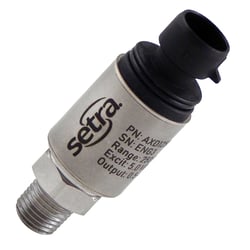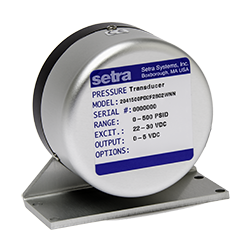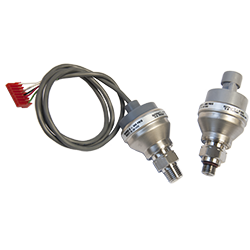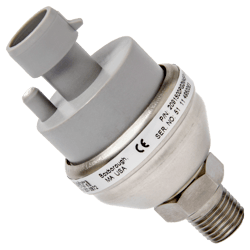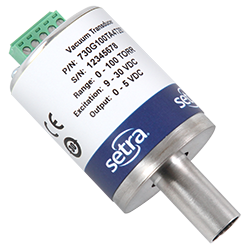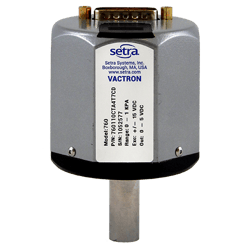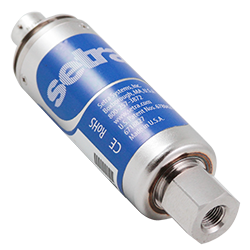- Website Pages
- Products
Vacuum Pressure Transducers
Setra Systems offers a wide range of vacuum pressure sensors and transducers, engineered to deliver precise performance in demanding applications. Our vacuum pressure sensors are designed for harsh environments, providing exceptional accuracy and durability for critical measurements. Built to meet the stringent requirements of industrial and OEM customers, Setra’s sensors ensure long-term reliability and cost-effective operation.
Whether you're managing vacuum systems, semiconductor manufacturing, or process control, Setra’s vacuum pressure sensors offer the high performance you need. Explore our product range below for detailed data sheets, operating instructions, and application-specific information, and discover why Setra is the trusted choice for vacuum pressure sensing solutions.
Vacuum Pressure Sensing Solutions
Model AXD Industrial Pressure Transducer
The Model AXD is designed for customers who require high performance, reliability and versatility at an affordable price.
Model 204 High Accuracy Pressure Transducer
Setra's Model 204 is the "standard" for measuring gauge and absolute pressure in the Test & Measurement industry.
Model 209H Stainless Steel Transducer
The Model 209H Stainless Steel Pressure Transducer is designed for customers who require high performance, reliability and versatility in harsh applications.
Model 209 Pressure Transducer
The Model 209’s capacitive transducer is designed for industrial applications with demanding price and performance requirements.
Model 730 Vacuum Capacitance Manometer
Setra’s Model 730 is a high accuracy capacitance manometer, for measuring low vacuum pressure ranges.
Model 760 Vacuum Capacitance Manometer
Setra's Model 760 capacitance manometer is an absolute pressure transducer designed for accurate and repeatable vacuum measurements.
Model ASM High Accuracy Sensor
The ASM is the highest accuracy transducer for measuring gauge, absolute, compound and vacuum pressure in the AccuSense™ product line.
Vacuum Pressure Sensor Basics
What is a vacuum pressure sensor?
A vacuum pressure sensor is a device that measures pressure levels below atmospheric pressure, commonly referred to as vacuum pressure. These sensors are essential in various applications, such as vacuum pumps, chambers, and systems, where maintaining specific vacuum conditions is crucial. They work by detecting the absence of air or other gases in a given space, providing accurate measurements in units like Torr, inches of mercury (Hg), or Pascals (Pa).
How does vacuum pressure work?
Vacuum pressure works by creating a space with pressure lower than the surrounding atmospheric pressure. This is typically achieved using a vacuum pump, which removes air and other gases from a sealed environment, reducing the pressure inside. The difference in pressure between the inside of the vacuum and the external atmosphere creates a vacuum effect. In practical terms, vacuum pressure is measured in units such as Torr, inches of mercury (Hg), or Pascals (Pa). The lower the pressure inside the vacuum, the stronger the vacuum effect. This principle is used in various applications, from scientific research and industrial processes to everyday items.
What is a vacuum pressure gauge used for?
A vacuum pressure gauge is used to measure the pressure within a vacuum, which is a space with pressure lower than the surrounding atmospheric pressure. These gauges are essential in various applications, such as, industrial processes, laboratory research, automotive industry, and HVAC systems.
What is a vacuum pressure transducer?
A vacuum pressure transducer is a device that measures vacuum pressure, which is pressure below atmospheric levels, and converts it into a standard electrical signal, such as 4-20mA or 0-5V1. These transducers are essential for precise monitoring and control in systems that operate under high vacuum conditions, such as in scientific research, industrial processes, and HVAC systems.
What is a vacuum gauge sensor?
A vacuum gauge sensor measures the pressure within a vacuum, which is a space with pressure lower than the surrounding atmospheric pressure. They work by detecting the absence of air or other gases in a given space and providing accurate pressure readings.

